by Doug Becker

The Snow Goose lives and breeds in the far northern tundra shores of Alaska, Canada, and Greenland. Migration, however, brings them south through Canada and down the four main flyways of the United States. During the cold weather seasons, they can be seen in huge flocks numbering in the thousands, across most of the U.S and into Mexico. Seeing these beautiful geese fly over in perfect formation is enough to make anyone come to pause. Even more, watching thousands of these great birds spiral from the sky and land in a swampy area, or open body of water, or even farm fields amid a cacophony of honking is a spectacle never to forget.
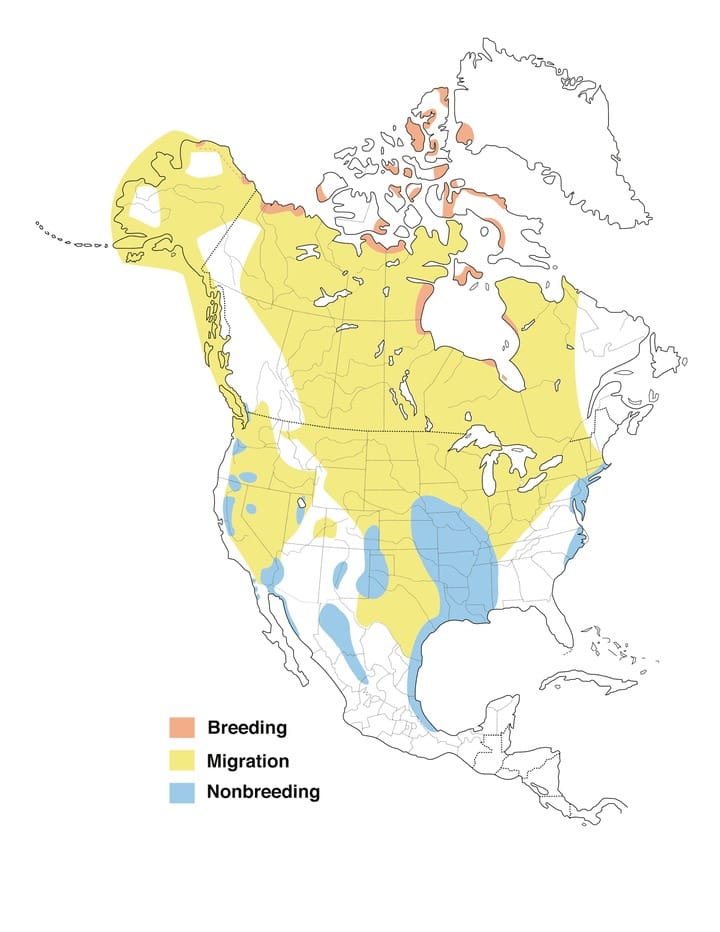

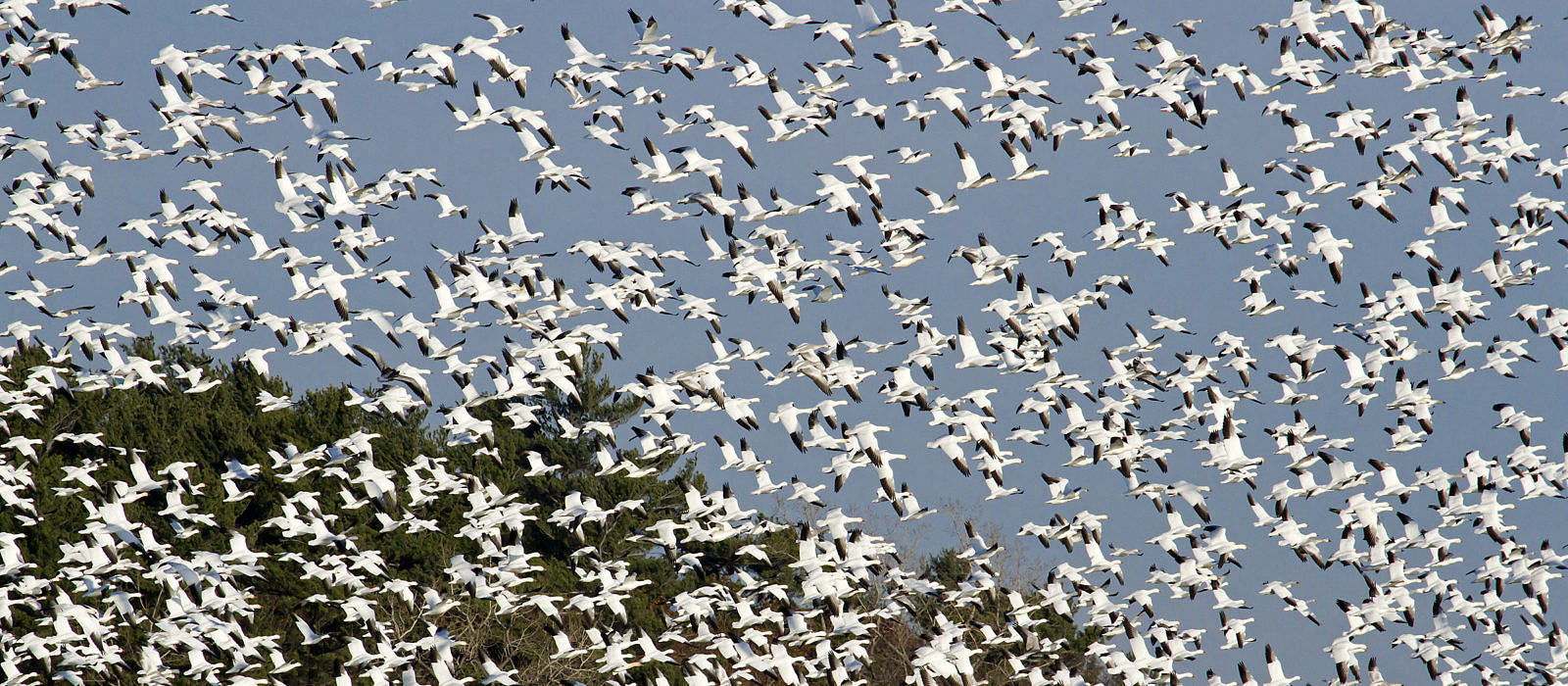
The Snow Goose has a wingspan of 59 inches, and is 38 inches in length, just a little smaller than a Canada Goose. Most Snow Geese are all white with black wingtips. This is called the white morph. Among the many white Snow Geese, there are some dark Snow Geese with a white head, and sometimes, a white belly. This is called the blue morph, or the “Blue Goose”. Same bird, but slight gene variation.
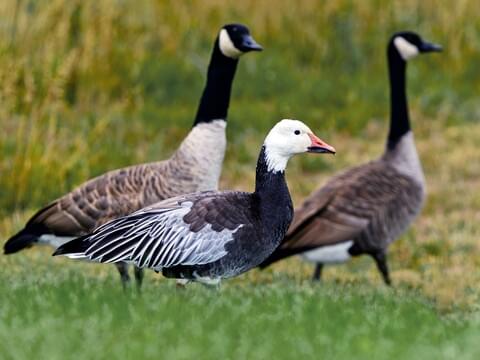
Snow Geese are vegetarians with a huge appetite. They will graze for miles each day to forage on grasses and plants of almost any variety. They will break plants off at ground level, or tear them out by the roots. Their diet includes seeds, stems, tubers, roots, and grains! Interestingly, as weather warmed and farming expanded in their range, so did the population of Snow Geese. In fact, their numbers have increased to the point of allowing hunters a greater harvest. Populations in the eastern and western arctic have tripled since 1973, and the central arctic population has grown by a factor of 25. Although food is plentiful for these geese, the geese themselves supply more food for the wolves, foxes, gulls, jaegers, bears, eagles and owls. Their over-population in their sensitive and small breeding areas can be environmentally harmful.

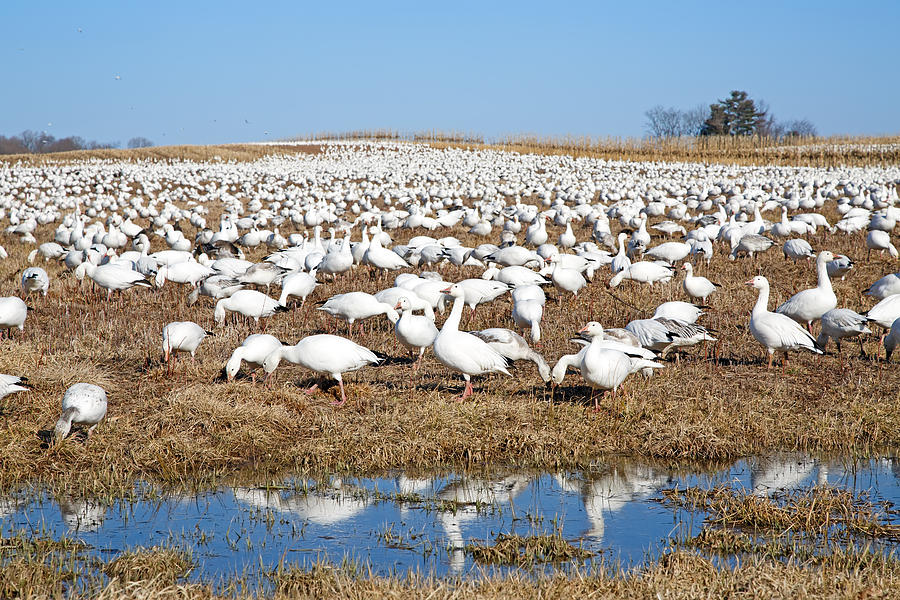
Snow Geese mate for life. They build their nests on the ground hidden among vegetation, rocks, and small shrubs. The female is the nest builder. After making several scratches on the ground in different places, she finally finds home. A quick clearing of earth, and the nest is ready for her first egg only an hour, or so, later. As she lays more eggs, she adds lots of fluffy down feathers plucked from her breast, and some leaves, twigs, grasses, or seaweed. Less protected nests are bigger, so nest sizes range from 3 feet to 6.5 feet across. Broods are only once per year with a clutch size of 2-6 eggs. Incubation period is 24 days, and their nesting period is just one day! Just one day and the little goslings are out foraging for food and watching out for the constant danger of predators.


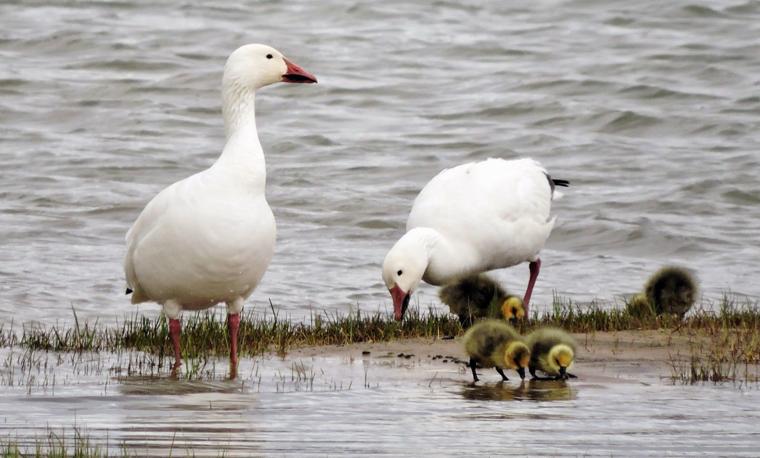
Although it’s lunch time for the Snowy Owls and foxes when those little goslings are spotted, most are able to mature into strong fliers, walkers, and swimmers. When on the water, Snow Geese can dive for some distance to avoid a predator. If Snow Geese aren’t busily feeding, then they’ re resting. This is done while sitting, standing on one leg, or swimming. During migration and winter, Snow Geese roost at night and prefer being on the water.

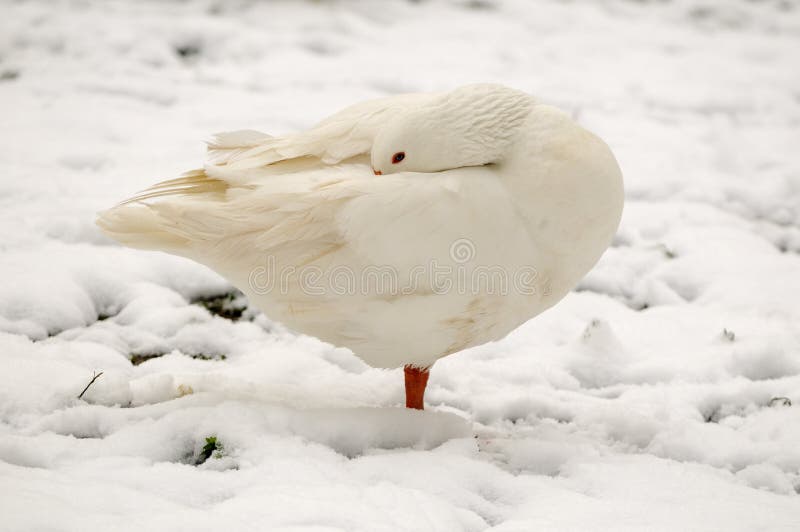
To see these spectacular geese, it may be easiest to identify their yearly stopover places during migration. Otherwise, just by chance, you may hear them coming and see them flying overhead in huge formations. A wonderful sight! That was the way I first encountered Snow Geese. While visiting a friend on a clear, chilly, day in November, we heard a very strange sound that was slowly getting louder and louder. I thought it was the university marching band practicing. Then it got louder still. Soon we looked up and saw over a thousand bright-white honking geese with beautiful black wingtips. Neither of us had ever seen anything like it. It was an experience!

Yep! That’s the stuff that keeps me birding. Today, I have the best field glasses, portable scope, cameras, feeders, backyard, and the great outdoors. Best of all, birding isn’t expensive and it’s not affected by Covid 19 at all. Ahhh, birding! The Snow Geese are coming! See ya out there!
